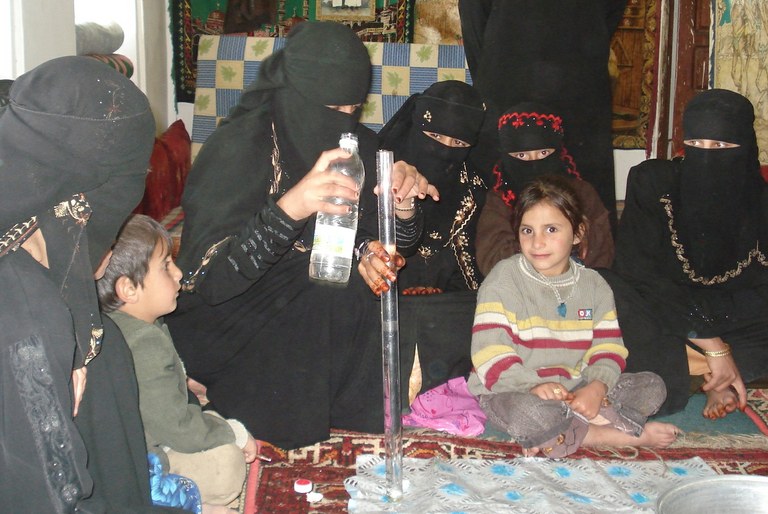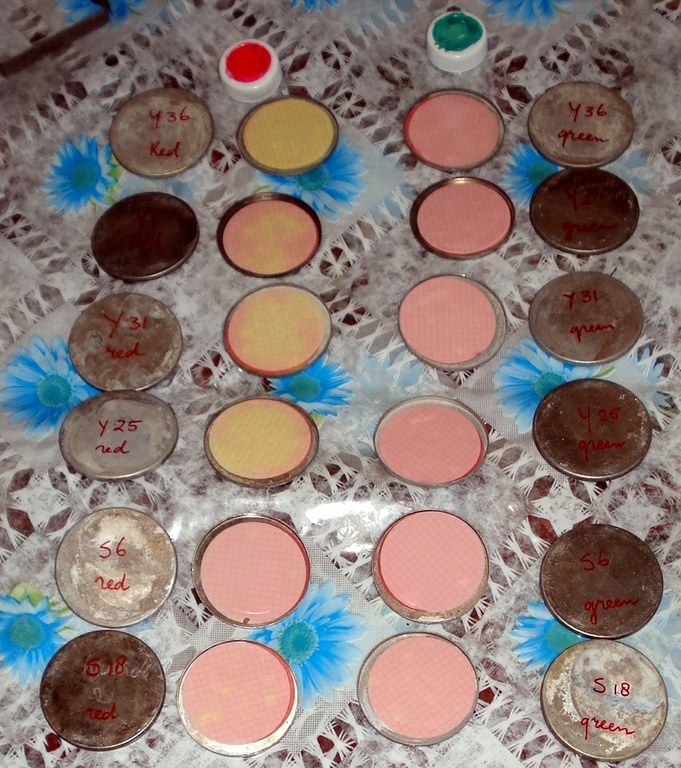Making water quality visible: for women as well as for men
Generally water quality testing is done to monitor the maintenance and operation of drinking water systems. In Yemen CARE uses the Delagua water testing kit (developed by OXFAM, reproduced by the Robens Centre for Public and Environmental Health, Surrey University) as an awareness tool to improve the understanding of ‘clean and safe water’ in village communities.
“We have learned to live with it and it does not affect us,” said women and men in remote villages of Yemen when explained that their drinking water was infested with bacteria. They did not make the connection between water quality and their children having diarrhoea once a fortnight, resulting in many children being underweight.
With the women fetching and storing water for their households, the health of the family depends on their decisions to improve daily routines. However, women in Yemen have often no say in such issues.
CARE is working with rural women’s associations in improving water quantity and quality in their village. After the construction of water storage tanks from which women carry water home, each family received a silver colloidal filter to further purify the water.
Testing the water
However, when CARE tested the water quality, nearly all water used at household level was still contaminated with E. coli bacteria, the main cause of diarrhoea. Although women and men attended hygiene and sanitation training, little behavioural change has been observed so far. Broken filters are not replaced; punctured pipes are not repaired.
Most water used in households is clear and looks clean to people using it. To understand that it could be far from clean, contamination needs to become visible and so that they could see this, the women were asked to do the water testing themselves. They had never been involved in “laboratory” work and without having seen the women do it, men were quick to remark: “we can do it much better”. Having been to school and travelled outside their village, they feel better equipped to do these things.
|
|
|---|
| Taking a filtered water sample. Photo: CARE Yemen |
A number of women have basic literacy skills. CARE assisted the women, via their village association, with literacy classes and the testing manual was adapted to simple Arabic with pictures and drawings, so the women could read what they were doing.
Once they had seen the testing procedure they took full charge and divided the tasks without hesitation. Project staff explained the relationship between testing, water quality and health. The Yemeni-WHO water standards were explained to demonstrate that water quality is a Yemeni and global issue and they are part of it.
The morning after the testing, the women counted the E. coli bacteria, which show up as yellow dots in the samples. They compared this to the filtered water where there were no such dots. Despite both samples of water looking visibly “clean” before testing, the women could now see with their own eyes the bacterial presence in their drinking water. They were impressed. However, they have not yet made up their minds as to its significance and they have not resolved what to do about it. The connection between their newly gained knowledge on hygiene and sanitation and the test results has still to be translated into action.
|
|
|---|
| The result: Bacteria show yellow, pads without bacteria stay red in the Petri dish. Photo: CARE Yemen |
Testing with men
The next step is to do the same testing with men, who are central to decision making in communities. If men understand the concept of clean and safe water and encourage and support women, the women will have more power to improve the water situation in the household.
Water quality aspects and consequences will be discussed again with the women and men, including how they can improve the situation. “Seeing is not yet doing”
Conclusions
The village women were almost illiterate in the beginning. However, they demonstrated themselves to be very capable of testing water quality and understanding the results. Water testing shows them that clean-looking water does not always mean safe water. In tribal Yemen, men also need to be convinced that something needs to be done to get better water quality. They need to undertake the same water testing as this will have a positive effect on the empowerment of women. Women should have time and space to improve the water quality, which in combination with hygiene and sanitation knowledge is expected to boost the family health situation.




